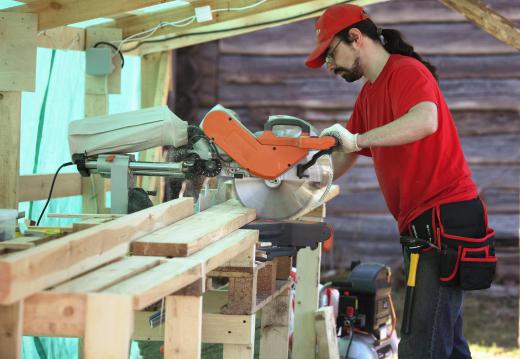Cutting boards for various construction projects can be a dangerous and time-consuming task. Therefore, many advancements in sawing technology have come along to ensure accurate cuts and safe working conditions. One such advancement that allows woodworkers to make long, lengthwise cuts on boards is the bench saw, also known as a table saw. The bench saw has a motorized circular saw mounted beneath a solid and steady work table; the blade of the saw protrudes through an opening in the table, allowing the user to make cuts at a variety of depths and angles.
A bench saw is often utilized to split long pieces of wood lengthwise, but it can be used for shorter pieces as well. The saw blade is movable, allowing the user to adjust the angle at which the blade comes in contact with the wood. The blade can be moved up and down, thereby allowing the user to cut wood at different depths according to their needs.

A bench saw usually comes standard with an attachment called a rip fence. The rip fence is a movable guide parallel to the blade of the saw that allows the user to adjust the width of the cut when cutting a board lengthwise. Another guide, known as a hold-down, is designed to sit on top of the board being cut to prevent the blade from picking up the board off the table. Other jigs and guides may come with a bench saw to aid the user in cutting boards at specific angles. Most of these guides will be adjustable to accommodate a variety of angles.
Because of the weight and positioning of the wood being cut on the bench saw, the bench itself must be extremely sturdy to prevent any movement that can lead to slipping or collapse. Bench saws are often very heavy to prevent movement and vibration, which can affect the accuracy of the cut and stability of the tool in general. Many safety precautions must be taken to prevent injury when using a table saw; wear eye protection at all times, and when possible, use a solid scrap of wood to push the board being cut past the blade. This will help the user keep his fingers away from the blade, thereby reducing the risk of accidental injury. When not in use, be sure to lower the blade of the bench saw beneath the table.
